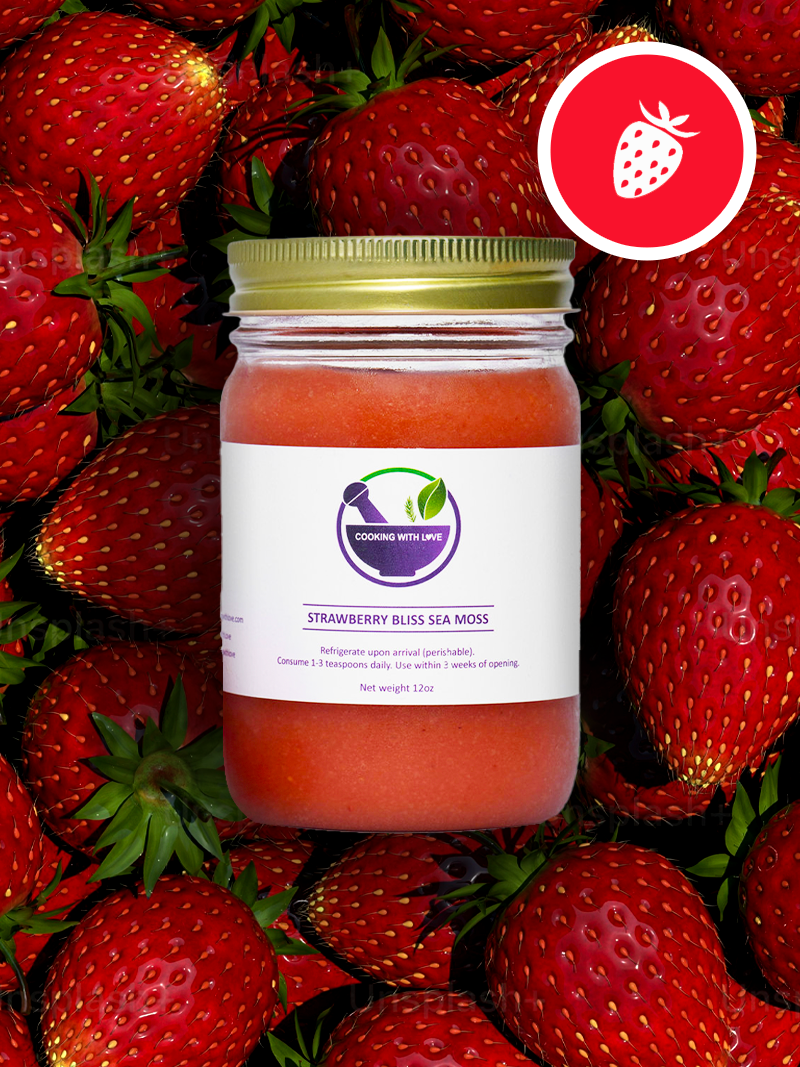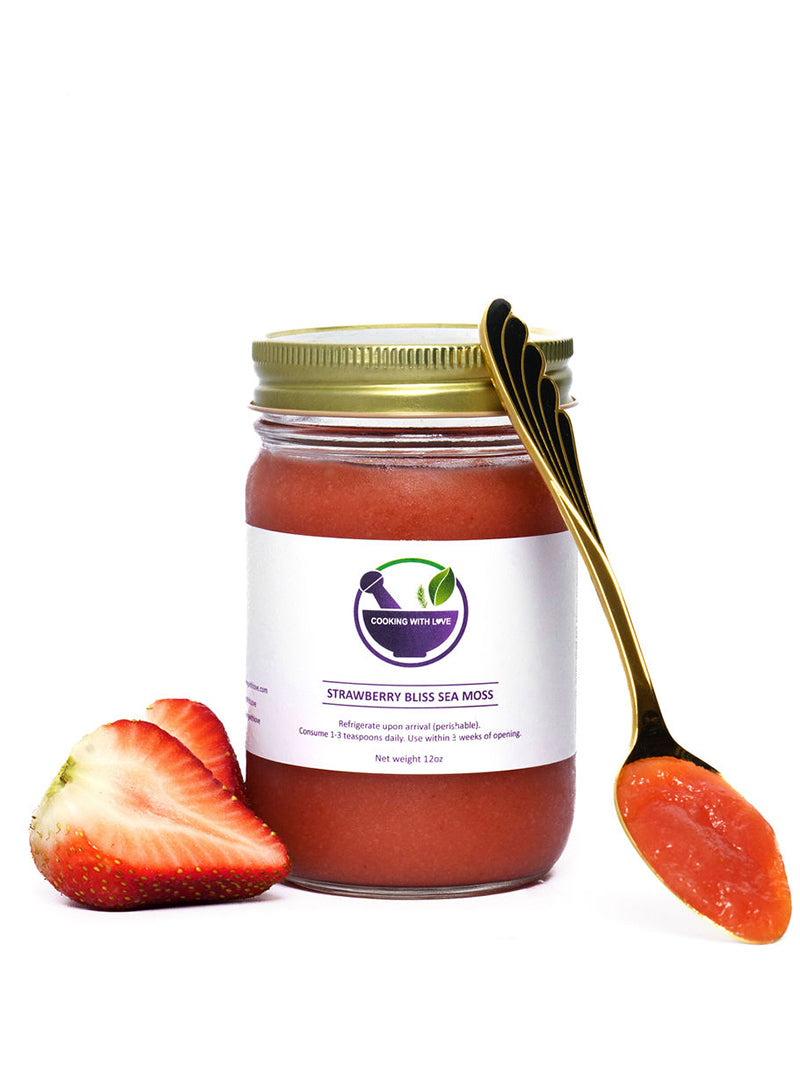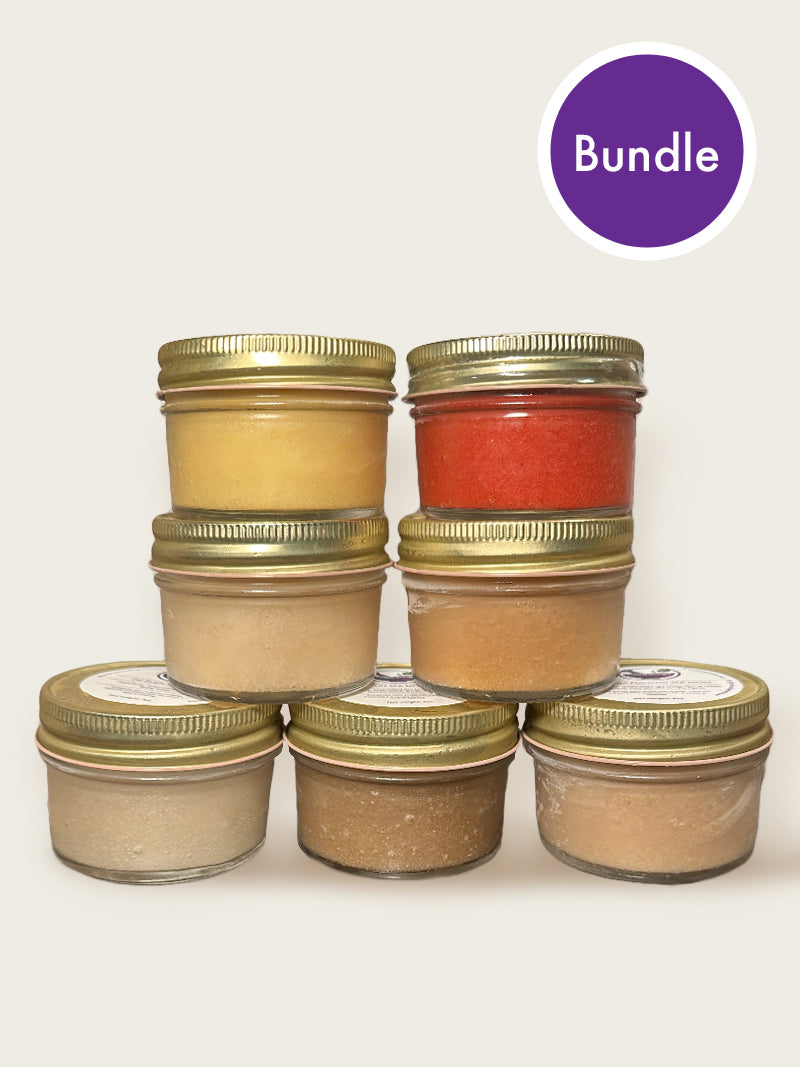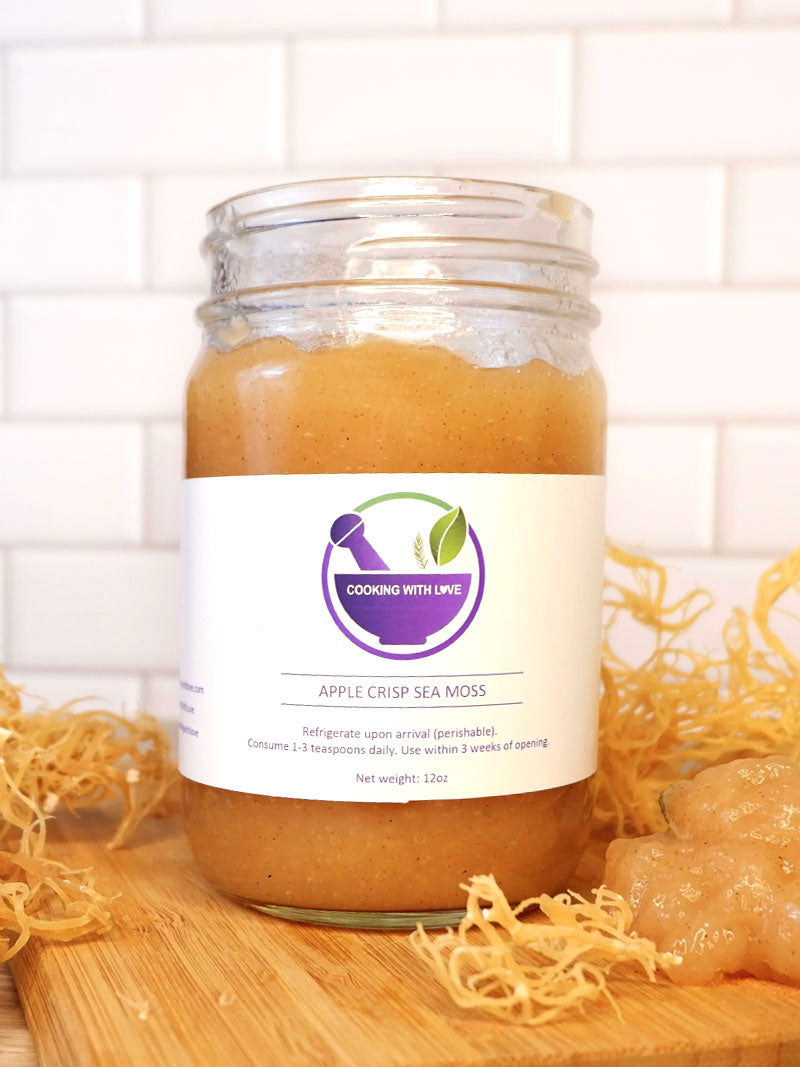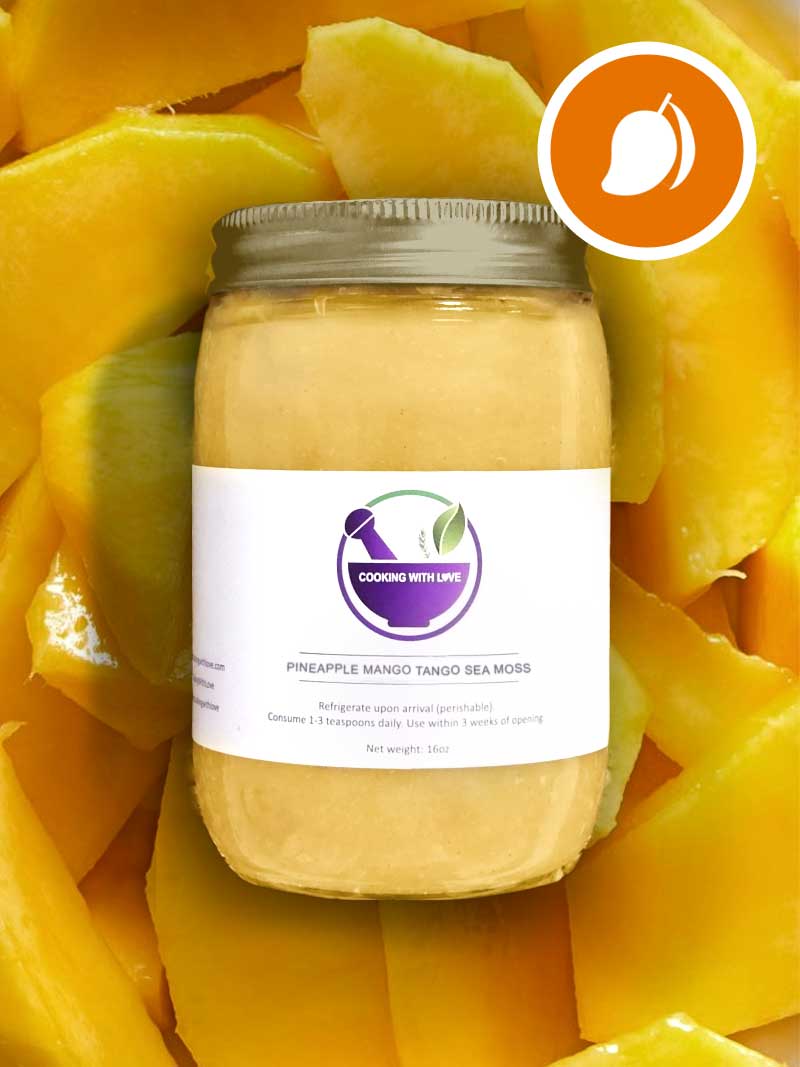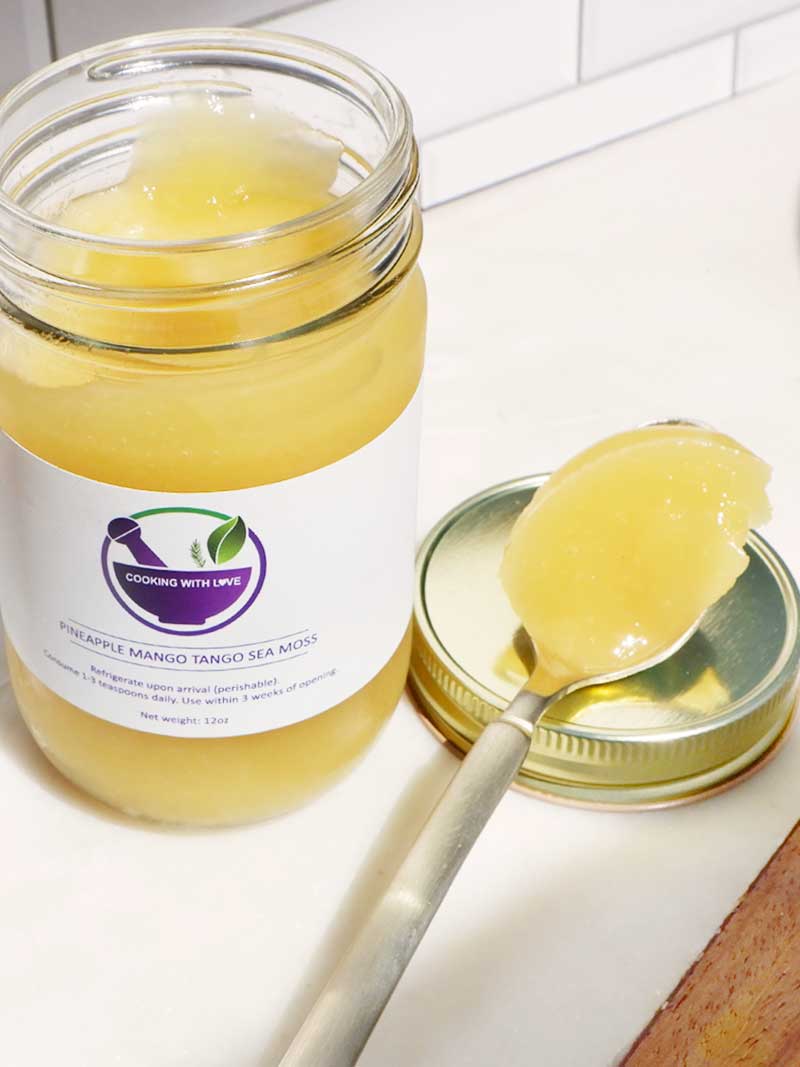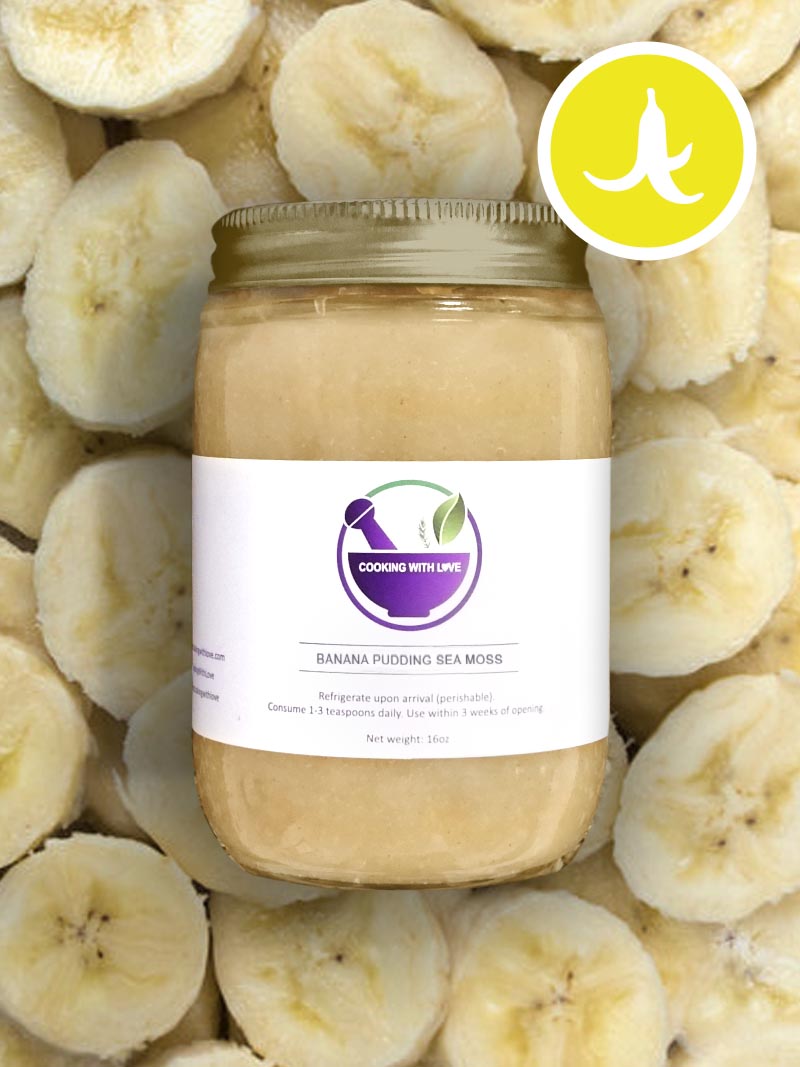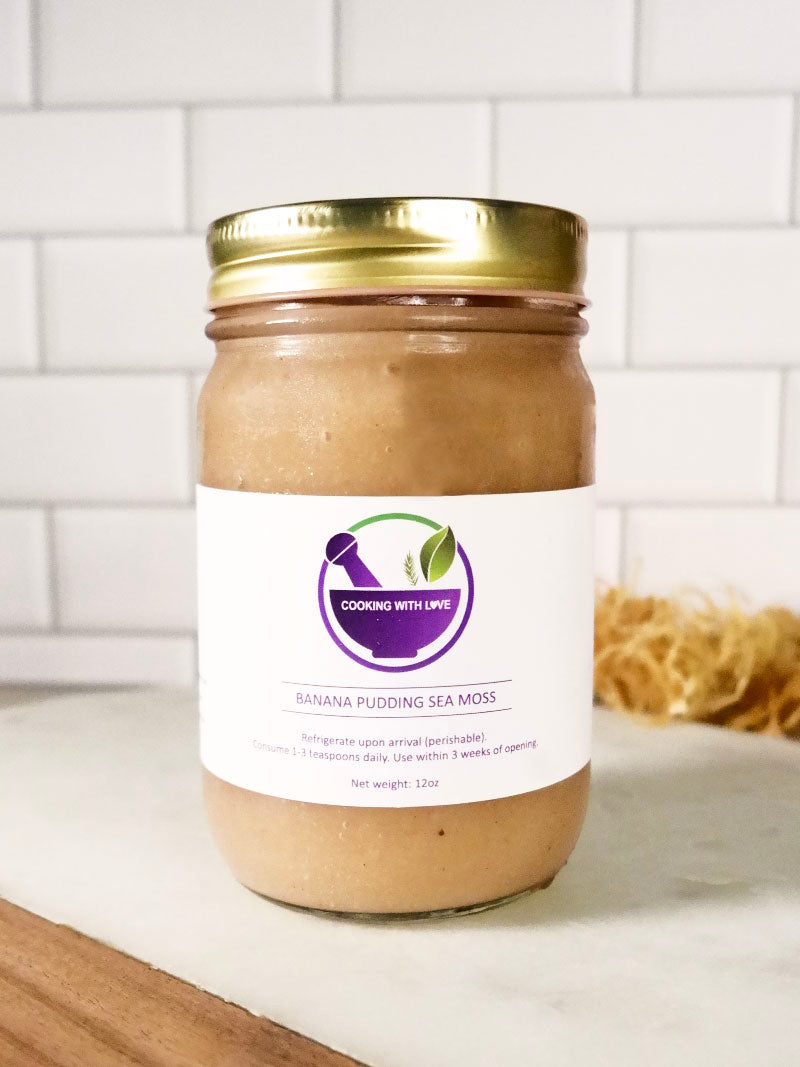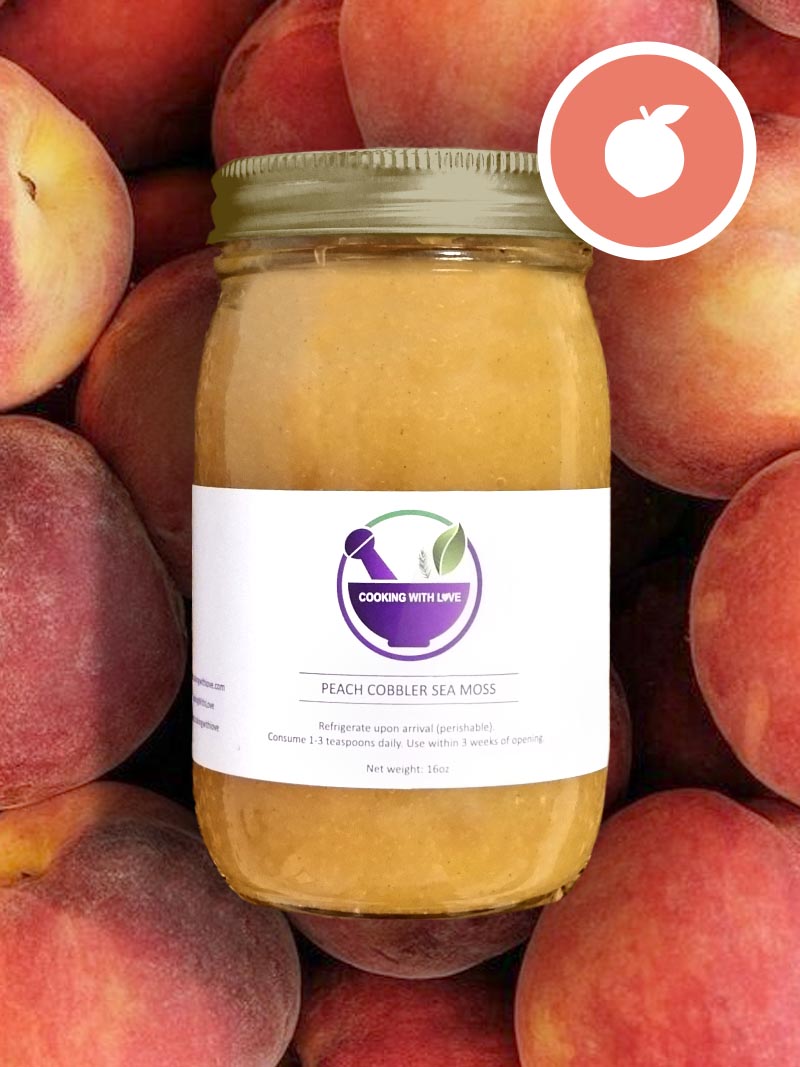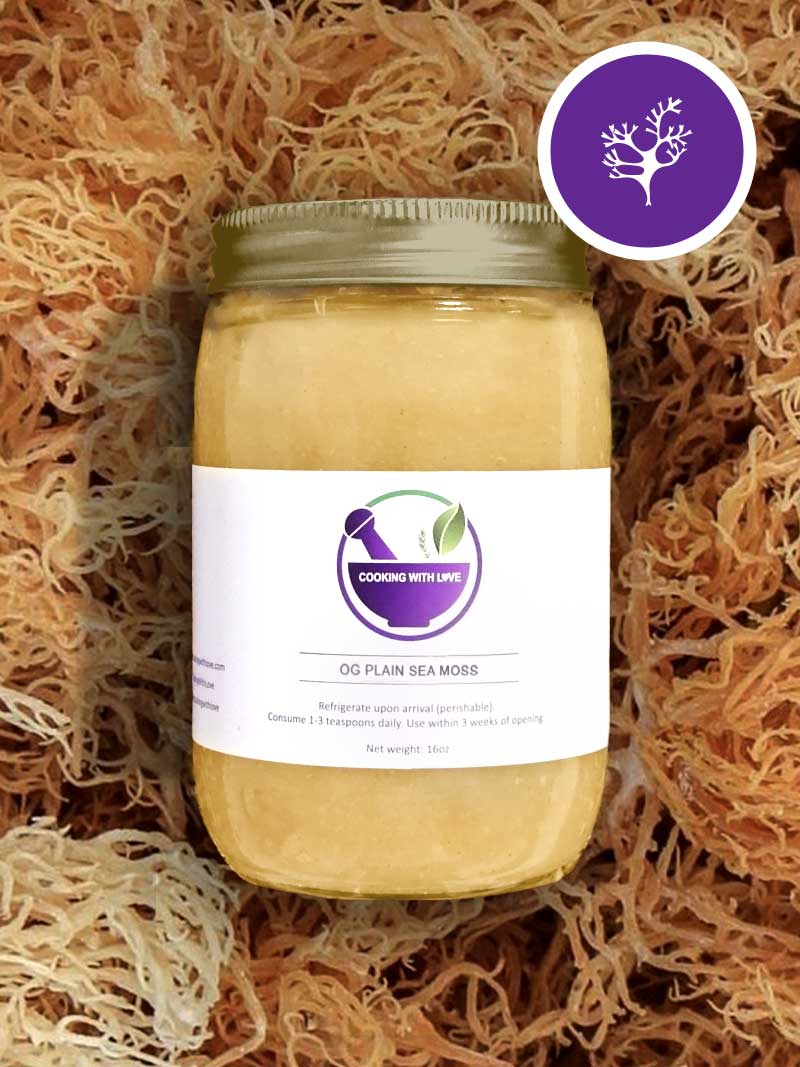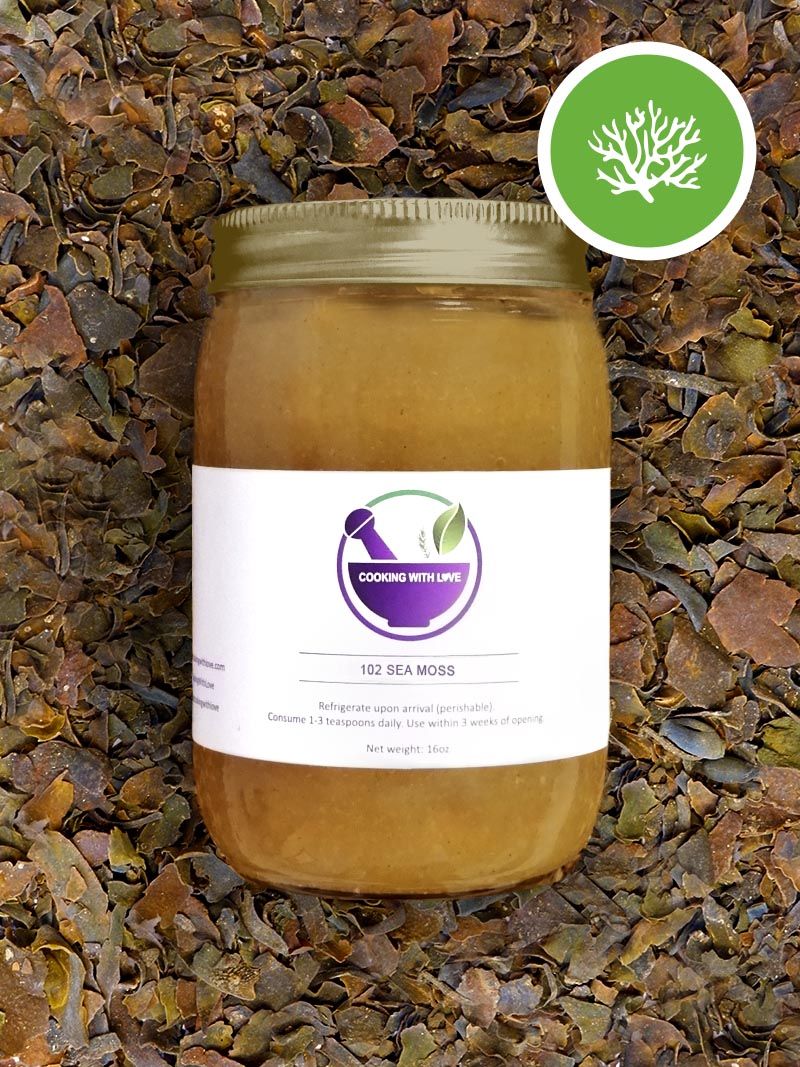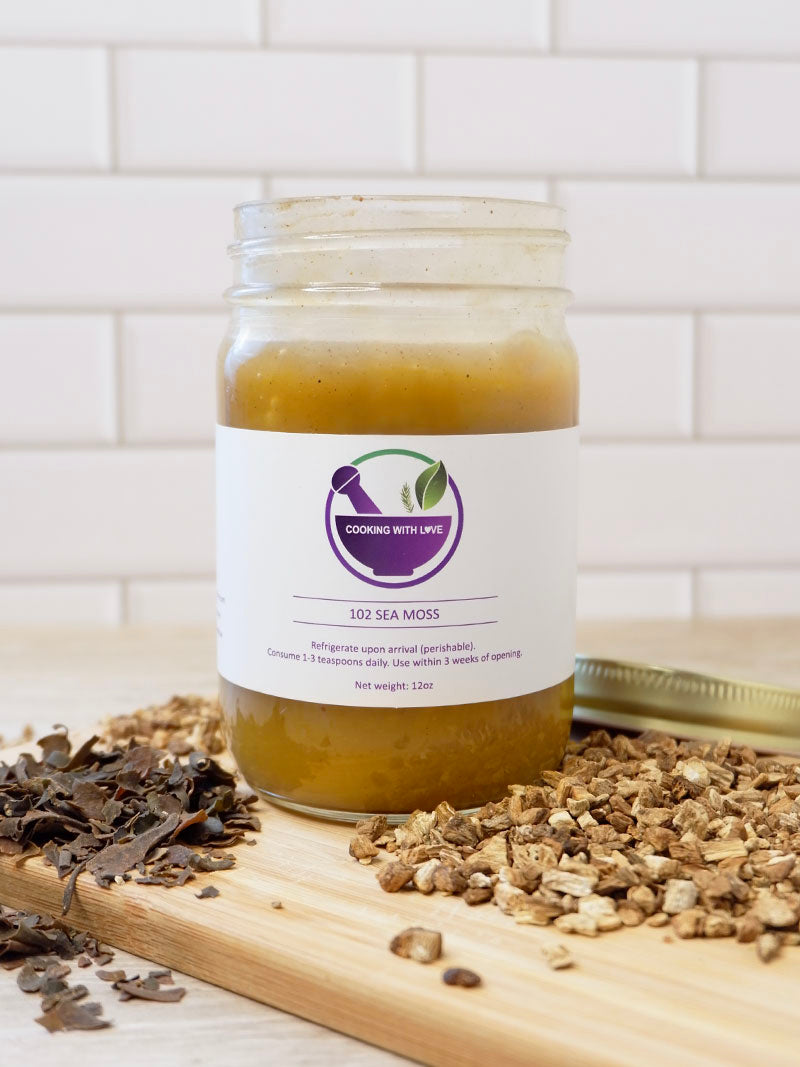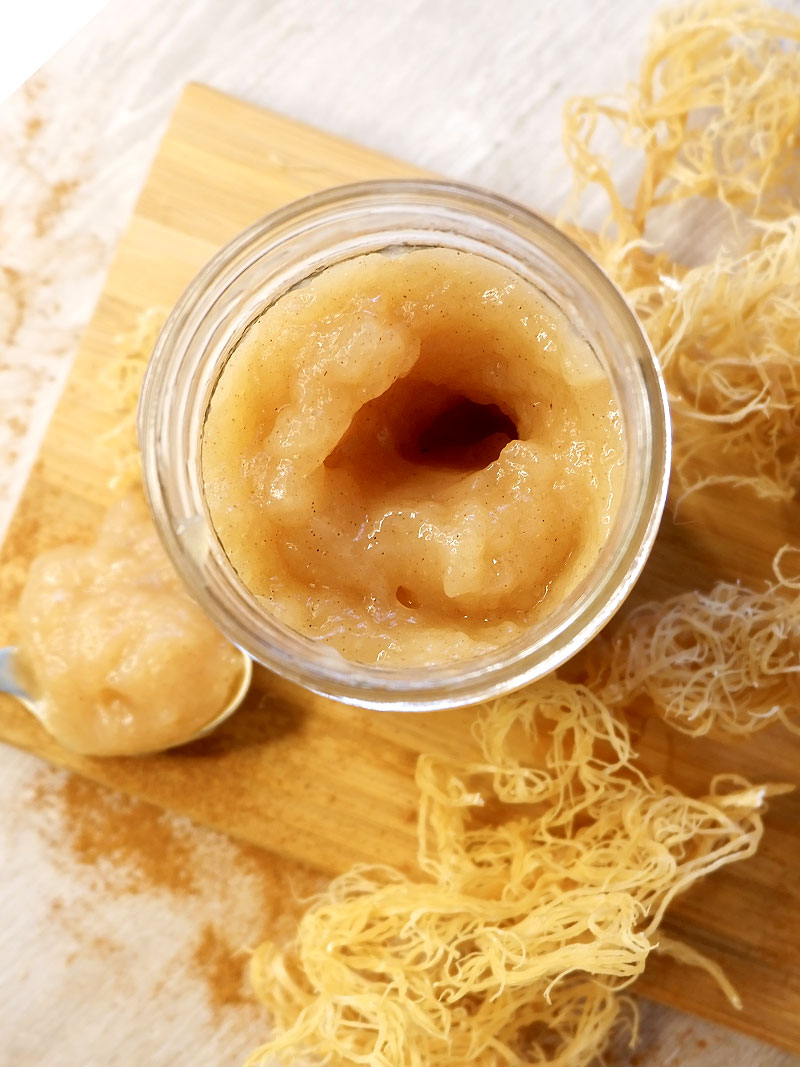How to Take Sea Moss Gel: Benefits and Methods Explained

Sea moss is a sea vegetable a part of the seaweed/sea algae family that is edible and considered a nutrient- dense super food, rich in vitamins, minerals, nutrients, and antioxidants.
Sea moss comes in various species and colors, ranging from green, yellow, and purple to red and brown. Among the most notable species is Chondrus Crispus, often called Irish Sea Moss, which thrives along the Atlantic coasts of Canada, the United States, Africa and Ireland.
In warmer waters, species like Eucheuma Cottonii and Gracilaria flourish, particularly in the Caribbean regions of St. Lucia and Jamaica, known for producing some of the finest wild-harvested sea moss in the world. Cooking With Love utilizes wild crafted Eucheuma Cottonnii sea moss from St. Lucia for our premium assorted sea moss gels.
Our sea moss gels can be eaten directly off the spoon, added to a smoothie, tea, soups, and used for face, skin, and hair. This makes it an easy addition to anyone's routine.
For those exploring creative uses, as mentioned, sea moss gel can also function as a thickening agent in soups, porridge, and desserts. This adaptability allows individuals to enjoy its benefits while experimenting with meal preparations that suit their tastes. People who enjoy sea moss appreciate its convenience and nutritional boost, whether for breakfast, lunch, or a healthy snack.
The flexibility of sea moss gel extends further with options like making gel ice cubes to chill and enrich beverages. This approach offers a refreshing twist to favorite drinks. With such diverse applications, the gel can easily complement various dietary preferences, making its inclusion both practical and rewarding.
Benefits of Sea Moss Gel
Sea moss gel is considered a natural supplement and superfood that many people incorporate into their diets for its nutritional richness and potential health and wellness benefits. As mentioned before, It is often used as a simple addition to smoothies, teas, or as a stand-alone supplement.
Nutritional Profile
Sea moss gel is packed with a variety of vitamins and minerals. It contains elements such as iodine, calcium, magnesium, and potassium. These nutrients are crucial for maintaining various bodily functions.
Iodine is particularly important for thyroid health, supporting metabolic regulation. Calcium and magnesium are essential for bone health and muscle function. Additionally, the presence of vitamins like A, C, E, and K contributes to overall wellness, supporting immune function and skin health. This mineral-rich food can be a beneficial addition to a balanced diet.
Therapeutic Properties
Sea moss gel is known for its potential therapeutic properties. It is often used for anti-inflammatory and antimicrobial qualities. These properties may support the body's natural ability to fight infections and reduce inflammation.
Some find relief in respiratory conditions by using sea moss gel, as it is thought to soothe the mucous membranes in the respiratory tract. Additionally, it may aid digestion due to its high fiber content. While research is ongoing, many individuals believe in its ability to promote overall health and wellness.
Wildcrafted vs. Farmed

Wildcrafted sea moss is harvested directly from its natural environment. This method typically offers sea moss that is rich in nutrients due to its exposure to diverse marine elements. It is often seen as superior in quality and offers a more robust mineral profile. However, harvesting wild sea moss can impact coastal ecosystems if not done responsibly.
Farmed sea moss, on the other hand, is cultivated in controlled environments. This practice can regulate growth conditions, ensuring consistent quality, but may lack some of the natural mineral diversity found in wildcrafted varieties. Farming sea moss allows for sustainable production, reducing pressure on natural habitats.
Ethical Harvesting
Ethical harvesting focuses on sustainable methods and fair trade practices. It involves regulating the quantity and method of sea moss collection to prevent overharvesting and environmental degradation. Proper techniques ensure that sea moss continues to thrive in its natural habitat, sustaining marine biodiversity.
Support for local communities like in St. Lucia is another aspect of ethical harvesting. Many sea moss harvesting areas rely on this industry for livelihood. Ensuring fair wages and equitable business practices is vital.
Preparation of Raw Sea Moss
To prepare raw sea moss effectively, it is crucial to focus on cleaning and rinsing thoroughly to remove any debris, followed by soaking techniques that enhance its texture and nutritional content. Both of these steps ensure the sea moss is safe to consume and easy to blend into a gel.
Cleaning and Rinsing
Start by examining the raw sea moss for any visible dirt, sand, or other debris. Proper cleaning ensures that sea moss is not only clean but maintains its natural flavor and nutrient profile.
Soaking Techniques
After cleaning, soaking the sea moss rehydrates it and makes it easier to blend. Place the cleaned sea moss in a bowl and fill it with filtered or spring water. The moss should sit in water for 4-10 hours, allowing it to expand and soften.
Storage and Preservation
To maximize the shelf life and quality of sea moss gel, it's crucial to follow proper storage techniques. By adhering to appropriate refrigeration and understanding the product's shelf life, users can maintain its beneficial properties.
Refrigeration Guidelines
Sea moss gel should be stored in an airtight container to prevent exposure to air and moisture, both of which can degrade its quality. Keeping the container sealed tightly is essential. For optimal freshness, store the container in the back of the refrigerator where the temperature is most consistent.
It's important to note that sea moss gel may change color or develop an unpleasant odor if not stored correctly. A deep green color indicates freshness, while a lighter green, yellow, or brown color suggests spoilage.
Shelf Life
The typical sea moss gel shelf life is up to 3 weeks with proper refrigeration. To extend its utility, consider freezing the gel in ice cube trays. This technique can preserve its nutrients for up to six months, allowing for convenient, portion-sized servings.
Incorporating Sea Moss Gel into Your Diet
Incorporating sea moss gel into a daily diet enhances its nutritional benefits, as well as introducing unique recipe possibilities. It can be enjoyed in various forms and quantities, promoting overall dietary enrichment and wellness.
Daily Intake Recommendations
Consuming sea moss gel typically involves small quantities. Generally, one to two tablespoons per day are recommended for most individuals. This intake helps ensure the nutritional benefits without overconsumption.
For those new to sea moss, starting with a lower amount can help the body adjust. It's crucial to consider any dietary restrictions or health conditions and adjust accordingly. Consulting with a healthcare provider might be advisable when introducing new supplements, especially for those with existing health concerns.
Recipe Ideas

Sea moss gel is versatile and can be included in many recipes. It can easily substitute gelatin in desserts. Or, add it to smoothies for a nutrient boost.
For more recipe ideas, check out the recipes on our website.
Adding it to beverages, such as teas or coffees, enhances their nutritional profiles. This flexibility allows it to fit seamlessly into a wide array of dishes, while still delivering its nutritional benefits.

